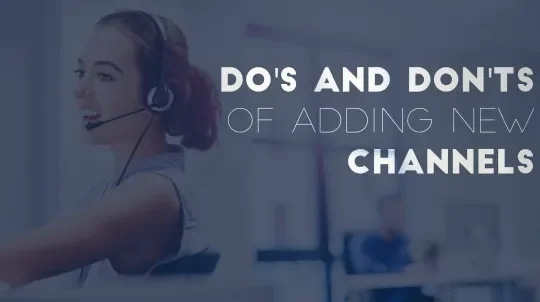
Private Twitter Messages Won't Eliminate the Contact Center
This article was originally published on MarTech Advisor, here.
By Mayur Anadkat
Imagine you've just purchased a brand new coffee maker and you can't wait to start brewing a fresh pot. When trying to set it up, you realize a crucial part is missing from the box. You reach for your phone and tweet at the company right away because they should know your dissatisfaction.
Twitter recently announced a new customer service feature which makes it easier for businesses to send a "private message" in response to a customer's tweet. In this situation, the coffee company could privately reply to your tweet to solicit feedback and address the issue. This is clearly an appealing feature for brands because the customer's problem gets solved without broadcasting negative comments all over Twitter.
Some have speculated that this new feature has replaced the traditional customer service contact center. However, while I agree that Twitter is a popular channel for customer service interactions, a truly great customer service program cannot run through only one channel. Providing a positive customer experience requires omnichannel engagement to run efficiently and productively. If you're unfamiliar, omnichannel customer service provides customers with options for how they would like to communicate with a brand.
It's important for businesses to accommodate their customer service interactions through all types of channels, whether via phone, email, online chat or social media, because not every customer is social media savvy and others prefer might to reach out in different ways. So although your first instinct is to tweet at the coffee company to get an issue solved, your parents or coworker might use a different approach and pick up the phone instead.
Here are three benefits companies will realize from utilizing an omnichannel approach in their customer service operations:
1. Allows you to stay up-to-date with the latest technologies. Think back to when a good, old-fashioned call seemed liked the only way to reach a company. Fast forward to today when there's more than one way to do so. A 2013 study found that millennials (18-34 years old) in particular are three times more likely to vent their frustrations via Twitter or Facebook. But when U.S. adults have an important customer service need, 70% will first call a company via phone for help. So although tweeting at a company is popular among one generation now, it will almost certainly be something else five years from now.
2. Increases customer service agents' ability to complete more transactions. When contact center agents can provide service over the phone, through email and via online chat, it grows their productivity rates and allows them to close more deals. For example, a manufacturing customer found that by turning single channel agents into multichannel agents, they were able to handle 28% more transactions while maintaining individual agent sales quotas. They also found that blended agents had higher motivation and lower burnout rates.
3. Keep up with your customers to satisfy their needs. We all know that customers frequently express concerns while also expecting fast results. Reacting to these concerns through a variety of channels will not only help the agents, but it will also keep customers happier because they can communicate on their preferred channel.
While communicating with customers through a channel like Twitter can be effective, it's important that companies don't neglect other channels when implementing customer service. The emergence of various channels - like social media - has rapidly increased the need for omnichannel customer communications, and there is more demand from consumers to have their issues resolved as quickly and efficiently as possible. The contact center is crucial to empowering agents to navigate and respond to customer preferences through multiple channels, which will delight customers and keep them coming back.


